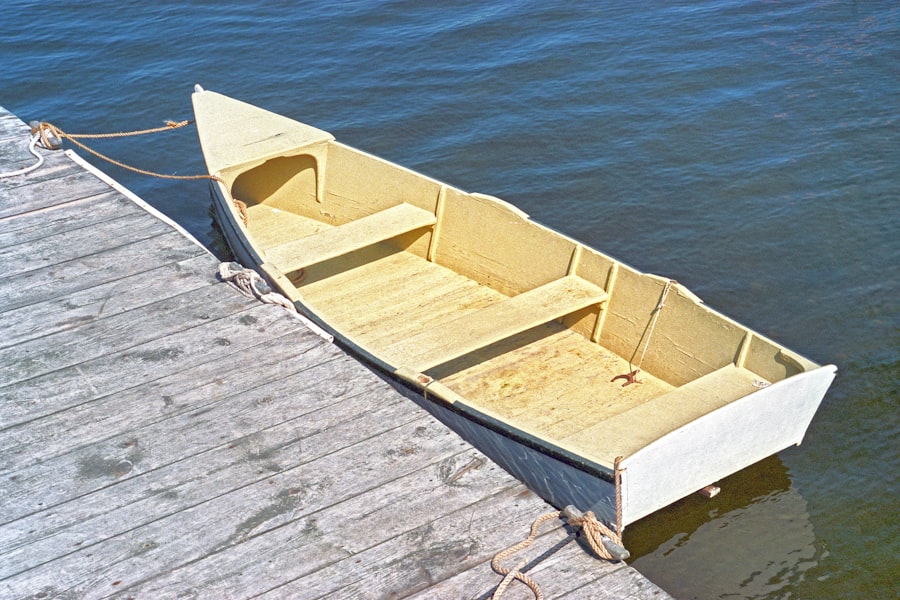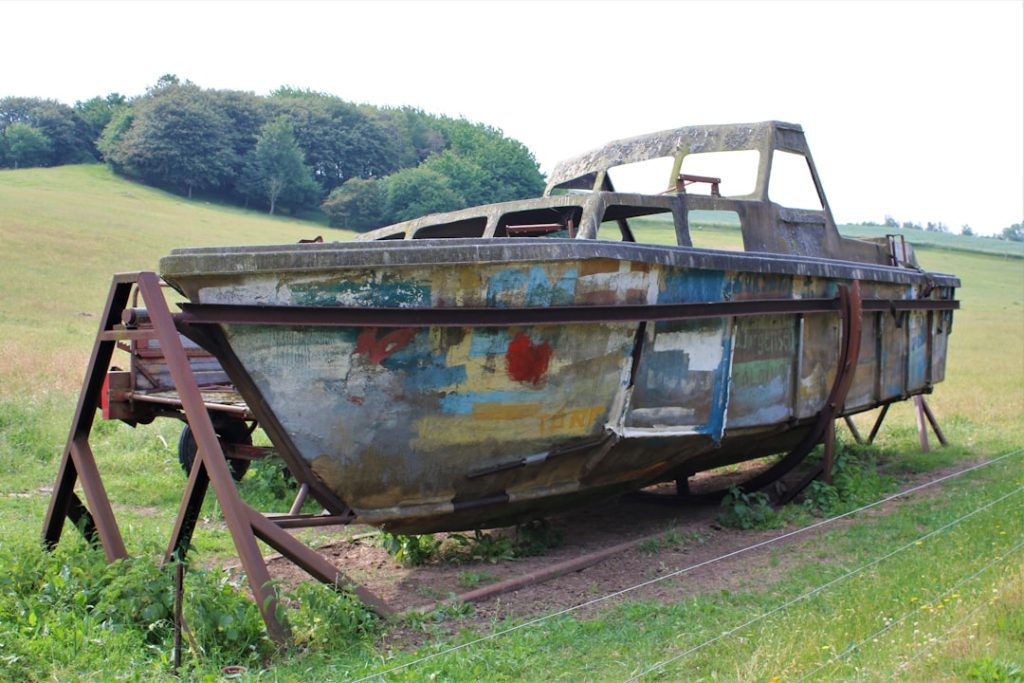When embarking on the journey to select the perfect dinghy, it is crucial to first understand your specific needs and intended use. Dinghies serve a variety of purposes, from leisurely day sailing to serious fishing excursions, and even as tenders for larger vessels. Therefore, the first step in this process is to assess how you plan to use the dinghy.
For instance, if you envision using it primarily for fishing, you might prioritize stability and storage for gear. Conversely, if your goal is to enjoy leisurely sails with friends or family, you may want a model that offers comfort and ease of handling. Additionally, consider the environment in which you will be using the dinghy.
Will you be navigating calm lakes, or are you planning to venture into coastal waters with potential waves? The conditions can significantly influence your choice. A dinghy designed for rougher waters will typically have a deeper hull and be built with sturdier materials, while those intended for calmer settings may be lighter and more maneuverable.
Understanding these factors will help narrow down your options and ensure that you select a dinghy that aligns with your lifestyle and preferences.
Key Takeaways
- Identify your specific needs to select the most suitable dinghy type.
- Research different dinghy options to understand features and market availability.
- Establish a realistic budget before purchasing to avoid overspending.
- Inspect used dinghies carefully for condition and potential issues.
- Plan for proper transport, storage, and maintenance to prolong dinghy lifespan.
Researching Available Options: Types of Dinghies on the Market
The market offers a diverse array of dinghies, each tailored to different activities and preferences. Among the most common types are inflatable dinghies, rigid hull inflatable boats (RHIBs), sail dinghies, and traditional rowboats. Inflatable dinghies are particularly popular due to their portability and ease of storage.
They can be deflated and packed away when not in use, making them ideal for those with limited space or who frequently travel. However, while they are lightweight and easy to transport, they may not offer the same durability or performance as their rigid counterparts. On the other hand, rigid hull inflatable boats combine the best of both worlds.
They feature a solid hull that provides stability and performance while still being relatively lightweight due to their inflatable sides. This type of dinghy is often favored by those who require a robust vessel for more demanding conditions, such as offshore fishing or rescue operations. Sail dinghies, characterized by their sails and rigging, cater to those who enjoy the art of sailing.
They come in various sizes and designs, from small single-handed boats to larger models that can accommodate multiple passengers. Traditional rowboats remain a classic choice for those who appreciate simplicity and nostalgia; they are often made from wood or fiberglass and are perfect for calm waters.
Setting a Budget: How Much Should You Spend on a Dinghy?

Establishing a budget is a critical step in the dinghy purchasing process. The price range for dinghies can vary widely based on factors such as size, material, brand, and condition. New dinghies can range from a few hundred dollars for basic inflatable models to several thousand dollars for high-end sailboats or specialized fishing dinghies.
It is essential to determine what features are most important to you and how much you are willing to invest in those features. When setting your budget, consider not only the initial purchase price but also ongoing costs associated with ownership. These may include maintenance, storage fees, insurance, and any necessary accessories or upgrades.
For example, if you opt for a used dinghy at a lower price point, you may need to allocate additional funds for repairs or modifications to ensure it meets your needs. Conversely, investing in a higher-quality new dinghy may save you money in the long run by reducing maintenance costs and enhancing your overall experience on the water.
Evaluating Condition: What to Look for When Inspecting a Used Dinghy
| Condition Aspect | What to Inspect | Indicators of Good Condition | Potential Issues |
|---|---|---|---|
| Hull Integrity | Check for cracks, holes, or soft spots | No visible damage, firm surface | Cracks, punctures, delamination, soft or spongy areas |
| Inflatable Tubes (if applicable) | Inspect for leaks, abrasions, and valve condition | Holds air well, no abrasions, valves function properly | Leaks, worn or torn fabric, faulty valves |
| Transom | Examine for rot, cracks, or damage where the motor mounts | Solid, no signs of rot or damage | Rot, cracks, weakened mounting points |
| Flooring | Check for stability and water damage | Stable, dry, no soft spots | Soft, warped, or waterlogged flooring |
| Hardware and Fittings | Inspect cleats, oarlocks, handles, and fasteners | Secure, rust-free, functional | Loose, corroded, missing parts |
| Oars and Oarlocks | Check for straightness, cracks, and secure fittings | Straight oars, intact blades, secure oarlocks | Warped or cracked oars, broken or loose oarlocks |
| Cleanliness and Maintenance | Look for signs of regular cleaning and upkeep | Clean surfaces, no mold or mildew | Dirt buildup, mold, mildew, neglect |
| Overall Stability | Assess balance and weight distribution | Stable when placed in water or on supports | Wobbly, uneven, or unstable |
If you decide to purchase a used dinghy, conducting a thorough inspection is paramount to ensure you are making a sound investment. Start by examining the hull for any signs of damage or wear. Look for cracks, blisters, or soft spots that could indicate structural issues.
For inflatable models, check for leaks by inflating the dinghy and listening for hissing sounds or visually inspecting seams for any signs of wear. Next, assess the overall condition of the fittings and hardware. Inspect oars, seats, and any other accessories that come with the dinghy.
Ensure that all components are functional and in good condition; replacing worn-out parts can add unexpected costs to your purchase. Additionally, if the dinghy has been previously used with an outboard motor, check for any signs of corrosion or damage around the transom area where the motor mounts. Finally, inquire about the dinghy’s history.
Ask the seller about how often it was used, where it was stored, and whether it has undergone any repairs or modifications. A well-maintained dinghy with a clear history is often a better investment than one that has been neglected or poorly cared for.
Finding the Right Seller: Where to Buy a Dinghy
Finding a reputable seller is crucial when purchasing a dinghy, whether new or used. There are several avenues to explore when searching for your ideal vessel. Local boat dealerships often carry a selection of new dinghies from various manufacturers and can provide valuable insights into different models’ features and benefits.
Additionally, many dealerships offer warranties or service packages that can provide peace of mind with your purchase. Online marketplaces have also become increasingly popular for buying dinghies. Websites such as Craigslist, eBay, and specialized boating forums allow buyers to browse listings from private sellers across various regions.
While this option can yield great deals, it is essential to exercise caution when purchasing online. Always verify the seller’s credibility by checking reviews or ratings if available and arrange for an in-person inspection before finalizing any transaction. Another option is to attend boat shows or local marine expos where numerous vendors showcase their products.
These events provide an excellent opportunity to compare different models side by side and speak directly with manufacturers or knowledgeable sales representatives who can answer your questions.
Transport and Storage: Considerations for Owning a Dinghy

Once you’ve acquired your dinghy, you’ll need to consider how to transport and store it effectively. Transporting a dinghy can vary significantly based on its size and type. Smaller inflatable models can often be easily transported in the trunk of a car or on a roof rack, while larger rigid hulls may require a trailer specifically designed for boat transport.
Ensure that your vehicle is equipped with the necessary towing capacity if you opt for a trailer; this will help avoid any potential issues during transport. Storage is another critical consideration that can impact your dinghy’s longevity and performance. If you live in an area with harsh winters or extreme weather conditions, it is advisable to store your dinghy indoors or under a protective cover when not in use.
This will help prevent damage from UV rays, moisture buildup, or freezing temperatures that could compromise its integrity over time. For those with limited indoor space, consider investing in a high-quality cover designed specifically for your dinghy type; this can provide adequate protection against the elements while allowing for outdoor storage.
Accessories and Upgrades: Enhancing Your Dinghy Experience
To maximize your enjoyment on the water, consider investing in accessories and upgrades that enhance your dinghy experience. Depending on your intended use, various accessories can improve functionality and comfort. For instance, if you’re using your dinghy for fishing trips, adding rod holders or storage compartments can help keep your gear organized and easily accessible.
Safety equipment is another essential consideration when outfitting your dinghy. Life jackets are mandatory in many regions and should be readily available for all passengers on board. Additionally, consider adding safety features such as flares, whistles, or even a first aid kit to ensure preparedness in case of emergencies.
For those interested in sailing dinghies, upgrading sails or rigging can significantly improve performance on the water. High-quality sails made from durable materials can enhance speed and maneuverability while also providing better handling in various wind conditions. Similarly, investing in upgraded oars or paddles can make rowing more efficient and enjoyable.
Maintenance and Care: Keeping Your Dinghy in Top Condition
Regular maintenance is vital to keeping your dinghy in optimal condition throughout its lifespan. After each use, rinse off any saltwater or debris that may have accumulated on the hull; this simple step can prevent corrosion and prolong the life of your vessel. For inflatable models, inspect seams regularly for signs of wear or damage; addressing these issues promptly can prevent more significant problems down the line.
If your dinghy has an outboard motor, follow the manufacturer’s guidelines for maintenance schedules and procedures. Regularly check oil levels, clean filters, and inspect fuel lines to ensure smooth operation when you’re ready to head out on the water again. Additionally, consider winterizing your motor if you live in an area with cold winters; this process typically involves draining fuel lines and adding antifreeze to prevent freezing damage.
Finally, keep an eye on any accessories or upgrades you’ve added over time. Regularly inspect life jackets for wear and tear, check that safety equipment is up-to-date and functional, and ensure that any added features remain securely attached and operational. By committing to regular maintenance and care routines, you can enjoy countless adventures on the water with your dinghy while ensuring its longevity and performance remain top-notch.


